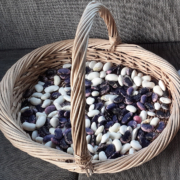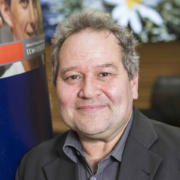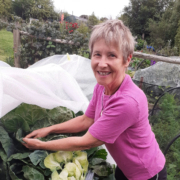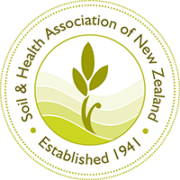Funding the future with biodynamics
Practitioners are convinced biodynamics is the way of the future – and are financing the research to prove it.
The content below is free to read from our May/June 2023 issue. This article is sponsored by Kete Ora Trust.
The practice of biodynamics runs deep in Aotearoa. Almost 100 years ago, the ideas expressed by Rudolf Steiner were adopted by a farm in Hawke’s Bay. A small but passionate community has existed ever since, spreading and taking root in diverse landholdings, from small backyards to iconic pastoral farms and vineyards. Part of a worldwide movement, people gleaned suggestions and possibilities from Steiner’s seven enigmatic lectures about ‘biological-dynamics’ and tested and refined them into modern biodynamic practice.
The Kete Ora Trust helps continue this learning and enquiry in modern times. It funds educational workshops and contributes to publications and conferences. Its current trustees are deeply experienced in their fields, with decades of experience in biodynamics. Kete Ora has been reinvigorated in the past 18 months, with new trustees and a new focus on funding research that produces scientific data that demonstrates the value of biodynamics practice.
Trust chair Sam Weaver is a well-known viticulturist and owner of Churton Wines. He says Kete Ora wants to raise its profile with potential donors as well as people needing funds for projects that will benefit the practice of biodynamics in New Zealand.

What makes biodynamics special?
The late Peter Proctor made a huge contribution to biodynamic understanding, not just in New Zealand but on an international scale. He was fond of saying that ‘biodynamics is what makes organics work.’ It is certainly the case that biodynamics rests on a shared foundation of accepted organic practice: protecting and enhancing soils and ecosystems and staying away from synthetic fertilisers, herbicides, pesticides, and fungicides.
If people know only a little bit about biodynamics, odds are they’ll associate it with planting by the moon or using homemade sprays of esoteric ingredients. These are essential tools in the biodynamic kit but they are only part of a comprehensive holistic philosophy of agriculture.
Sam Weaver says the fundamental thing that defines biodynamics is a systems approach that views every farm or garden as a living whole. “We recognise the individuality of every landholding. Every decision, every activity affects everything else. The careful observations of people deeply connected to that place play a vital role. We emphasise analysis, testing, observing, refining your practices,” he says. Specific practices are used to build soil fertility but always in the context of the needs of a particular property. You have to be a good farmer first, Peter Proctor would say, then add biodynamics on the top.
Some biodynamic properties choose to undertake the rigorous Demeter certification on top of meeting one of the organic standards. The number of Demeter licences has waxed and waned over the decades in New Zealand. Milmore Downs, a mixed farm in North Canterbury (profiled in OrganicNZ Jul/Aug 2017), is the oldest continuously licensed Demeter property in New Zealand. It’s also certified organic by BioGro.

Statistics
BioGro’s Organic Wine Report 2021 showed 2,418 hectares of certified organic vineyards (including 432 ha in conversion). The majority (70%) of biodynamic vineyards and producers are clustered in two regions: Marlborough and Central Otago. There were 102 organic labels and pinot noir is by far the largest variety produced.
Biodynamic winemaking
Winegrowers currently make up over half of Demeter licensees. Sam Weaver says there are reasons unique to viticulture that explain the attraction of biodynamics. “Top winemakers strive to express the character of an individual vineyard. This concept of terroir is fundamental. Biodynamics is the only farming philosophy that emphasises the individuality of a site; it makes absolute sense to growers and makers of wine.”
The qualities of the grapes are integral to the wine they yield. Beyond the characteristics of a particular site— bony soils and hot summers, for example—a thriving soil microbiology will change the way the vines take up water and nutrients. That in turn influences the quality of the fruit and the wine that can be made from them, explains Sam.
Some people come to biodynamics because of an affinity for Steiner’s broader teachings, a philosophy called anthroposophy. Others have been drawn by witnessing the results of biodynamic practice. “Winemakers in New Zealand are a close-knit community,” says Sam Weaver. “When iconic winemakers produce the very best wines in their regions and they are using biodynamic methods— their peers pay attention to that.”
It’s not surprising then that one of Kete Ora’s first scientific collaborations is with microbial ecologists from Auckland University to identify the microbial genome in soils in sauvignon blanc vineyards in Marlborough. Kete Ora is keen to expand the research remit to compare soil biology and carbon sequestration in soils managed biodynamically compared to soils managed according to industrial practices.
This has parallels in the Swiss DOK trial (biodynamic (D), organic (O) and conventional (K for the German spelling ‘konventionell’), which has been running since 1978. Details of the trial can be found at glten. org/experiments/161. There are many scientific papers available online that analyse the data collected from this site, including investigations of the difference in soil organic carbon levels.
Kete Ora’s trustees are keen to show people the science behind biodynamic practices, says Sam Weaver. “When you’re involved, you can see the qualitative benefits for yourself. But we also want to support people to get the data to prove those benefits, prove those benefits, to quantify them, and to explain how biodynamic practices work from the viewpoint of modern scientific principles.”
Ongoing impact
Kete Ora was founded in the late 1990s thanks to generous bequests from leading figures in Aotearoa’s biodynamic community. The Trust has managed those gifts very well in the decades since and is now responding to the emerging challenges we face. Sam Weaver sees the Trust’s role as ensuring the health and long-term viability of biodynamics. “Biodynamics is the most rational and effective form of carrying out agriculture, we’re convinced of it. We really want to see the light shone on biodynamics and have it recognised as at the apex of the battle against climate change.”

Kete Ora Trust is a charitable organisation established in 1997 thanks to generous bequests. It invests in, and supports education and research into biodynamic, organic, and regenerative land use in Aotearoa New Zealand. Visit keteora.nz for more information about applying for grants or making a donation.




